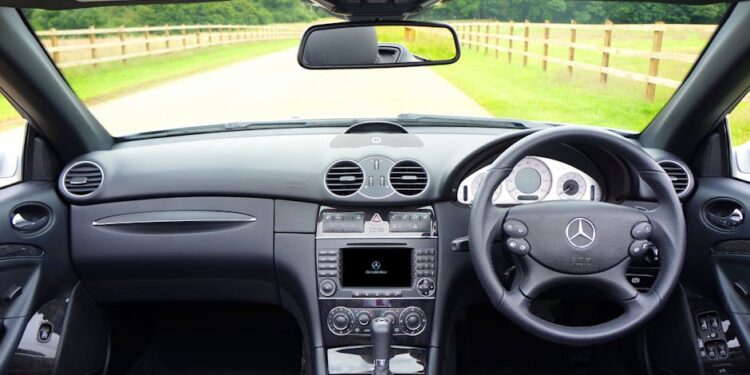Introduction: The Annual Battle Against Rising Premiums
For every vehicle owner, the cost of auto insurance is a significant and unavoidable recurring expense. It is legally mandated in most jurisdictions to protect drivers, vehicles, and the public from the devastating financial consequences of accidents.
However, the annual or semi-annual renewal notice often arrives with a frustrating, non-negotiable price increase. This prompts many consumers to default to the easiest solution: reducing their coverage limits or raising their deductibles to lower the premium.
This reactive approach, while providing immediate savings, exposes the driver to severe financial risk. It could potentially turn a minor fender-bender or a totaled vehicle into a catastrophic out-of-pocket expense that far outweighs the premium savings. Smart financial management demands a more strategic and nuanced approach to insurance costs.
The reality is that insurance premiums are not fixed; they are complex calculations based on dozens of variables, many of which can be actively controlled or optimized by the policyholder. Insurers assess risk based on factors ranging from the driver’s credit score and vehicle safety features to the policy’s administrative details, such as payment frequency and bundling options.
Successfully cutting costs without sacrificing crucial coverage—such as comprehensive, collision, or robust liability limits—requires a disciplined, proactive strategy focused on maximizing discounts and leveraging the power of competitive shopping. A simple phone call to an agent or a quick online quote comparison can often yield hundreds of dollars in annual savings without ever having to touch the policy’s protective limits.
This comprehensive guide is designed to empower you with the essential, high-impact strategies for legally and effectively minimizing your car insurance premiums. We will meticulously dissect the major variables that influence your final premium price, analyze the crucial difference between required liability and protective coverage, and provide a clear, step-by-step checklist for optimizing discounts and utilizing comparison shopping. By mastering these tactics, you ensure that your policy provides an unshakeable shield of protection while maximizing your savings.
Part I: The Policy Structure and Why Coverage Matters

Before attempting to cut costs, every driver must understand the core components of their policy and the specific financial role each type of coverage plays.
A. Non-Negotiable Coverage: Liability Insurance
Liability coverage is the most critical and often legally required portion of your policy, protecting your assets if you cause an accident.
- Bodily Injury Liability: Pays for medical expenses, lost wages, and pain and suffering for the people injured in an accident you cause. This is the coverage that protects your personal net worth from lawsuits. Experts strongly recommend maintaining limits significantly above state minimums (e.g., $100,000 per person/$300,000 per accident).
- Property Damage Liability: Pays for damage you cause to another person’s property, such as their vehicle, fences, or buildings. Maintaining high limits here is crucial, given the rising cost of vehicle repair and replacement.
- The Risk of Skimping: Reducing liability coverage to state minimums is the most dangerous financial mistake. If a serious accident results in a judgment exceeding your liability limits, you are personally responsible for the difference.
B. Protective Coverage: Your Vehicle and Yourself
These coverages protect your own assets and medical expenses, and are usually mandatory if you have an auto loan.
- Collision Coverage: Pays for damage to your own vehicle resulting from a collision with another object or vehicle. This coverage is essential if your car is new or high-value.
- Comprehensive Coverage: Pays for damage to your vehicle resulting from events other than a collision, such as theft, vandalism, fire, hail, or hitting an animal.
- Personal Injury Protection (PIP) / Medical Payments (MedPay): Covers medical expenses for you and your passengers, regardless of who is at fault for the accident. This is critical in no-fault states.
C. The Strategic Goal
The goal of cost-cutting is to maintain high liability limits and necessary physical damage coverage while strategically reducing the cost of that coverage through discounts and optimization.
Part II: Maximizing Policy and Driver Discounts

The fastest, least risky way to reduce your premium is by systematically auditing and maximizing every available discount offered by the insurer.
A. Driver Behavior and Education Discounts
Insurers heavily reward safe and responsible driving habits.
- Clean Driving Record Discount: Maintaining a clean driving record (no accidents or moving violations) for three to five years is the single largest discount factor.
- Defensive Driving Course: Many insurers offer a small, permanent discount (often 5% to 10%) if you voluntarily complete an accredited defensive driving course. This is particularly useful for younger or older drivers.
- Good Student Discount: High school and college students who maintain a minimum GPA (e.g., B average or 3.0) can qualify for a significant discount.
B. Policy and Billing Optimization Discounts
These discounts involve making simple changes to how you manage your payment and policy details.
- Bundle Your Policies: This is the most potent discount. Consolidate your car insurance with other policies (home, renter’s, life insurance) through the same provider. Bundling can often yield savings of $10\%$ to $25\%$ on the total premium.
- Pay in Full: If financially feasible, pay the entire six-month or annual premium upfront instead of opting for monthly installments. Insurers often charge a hidden administrative fee for monthly billing, which is avoided by paying in full.
- Go Paperless and Automatic: Enrolling in automatic payments (ACH withdrawal) and electing to receive documents electronically often qualifies the policyholder for a small, easily obtained discount.
C. Vehicle Safety and Anti-Theft Discounts
The type of vehicle you drive and its security features directly reduce the insurer’s risk.
- Anti-Theft Devices: Vehicles equipped with factory-installed alarms, tracking systems (e.g., LoJack), or engine immobilizers often qualify for a discount on the comprehensive portion of the premium.
- Safety Features: Cars with high safety ratings and features like automated seatbelts, side-impact airbags, or Electronic Stability Control (ESC) may receive credits.
- New Vehicle Discount: Some companies offer a loyalty discount for insuring a brand-new vehicle, as the risk is known to be lower initially.
Part III: Strategic Policy Adjustments (Reducing Risk)
Once all discounts are applied, the final step involves carefully adjusting the policy’s cost variables without compromising liability protection.
A. Increasing the Deductible
The deductible is the amount you pay out-of-pocket before your insurance coverage kicks in for collision or comprehensive claims.
- Cost vs. Risk: Increasing your deductible from $250 or $500 to $1,000 or $2,500 can substantially lower your premium. The higher the deductible, the less risk the insurer assumes, and the lower the premium.
- Maintain Cash Reserve: This strategy only works if you have a corresponding emergency fund that covers the full amount of the higher deductible. Never increase the deductible beyond the liquid cash reserve you can comfortably access immediately.
- Claim Frequency: This is best for drivers who rarely file claims and are using the deductible primarily to insure against catastrophic loss, rather than minor damage.
B. Dropping Unnecessary Coverage
Reviewing the age and value of your vehicle may justify removing certain coverages entirely.
- The 10-Year Rule (Collision/Comprehensive): If your vehicle is over 10 years old or its market value (e.g., Kelley Blue Book value) is less than ten times the annual premium for collision and comprehensive coverage, it may be financially prudent to drop these coverages entirely.
- Maximum Payout: If the annual premium for collision is $600, but the car is only worth $4,000, paying the premium for the sake of a marginal payout is inefficient.
- Roadside Assistance and Rental: Check if you already have roadside assistance (AAA, credit card benefit, cell phone plan) or rental coverage through other sources. If so, drop these often-redundant add-ons from your car insurance policy.
C. Leveraging Telematics (Usage-Based Insurance)
Many major insurers offer optional programs that track driving behavior via an app or a device plugged into the car’s OBD-II port.
- Data Tracking: These programs track metrics like mileage, braking habits, acceleration speed, and time of day driven.
- The Reward: Safe drivers who enroll and adhere to safe habits can earn substantial discounts (up to $25\%$ or $30\%$) based on their verified low-risk driving profile.
- The Catch: Unsafe or erratic drivers may see their premium increase or fail to qualify for any discount. Furthermore, you must be comfortable with the insurer collecting your driving data.
Part IV: The Power of Shopping and Switching
Even after maximizing internal discounts, the greatest potential saving often comes from switching providers entirely.
A. The Necessity of Comparison Shopping
Insurance rates vary wildly between carriers because each company calculates risk differently and targets specific demographics.
- Shop Every Renewal: You should comparison shop every 6 to 12 months, even if you are satisfied with your current provider. Your old company’s loyalty discount may be dwarfed by a new company’s acquisition offer.
- Gather Multiple Quotes: Obtain quotes from at least three different types of carriers: a large national firm (State Farm, Geico), a direct online seller (Progressive, Esurance), and an independent local broker who can quote rates from multiple smaller companies.
- Compare Apples to Apples: When comparing quotes, ensure the coverage limits (e.g., 100/300/100 liability and $1,000 deductible) are identical across all quotes. Comparing policies with different limits is meaningless.
B. Leveraging the Agent or Broker
The method you use to obtain the quote affects the outcome.
- Independent Broker: Using an independent broker who works with dozens of companies is highly efficient. The broker shops the market for you and helps identify niche discounts available from smaller carriers.
- Direct Quoting: Direct quoting from large companies (Geico, Progressive) often yields competitive rates because they save on agency commission costs, passing that saving to the consumer.
C. The Credit Score Connection
In many states, your credit score is a major factor in determining your premium (Credit-Based Insurance Score).
- Risk Proxy: Insurers use this score as a proxy for financial responsibility. Policyholders with higher credit scores typically file fewer claims, leading to lower premiums.
- Improve Your Credit: Improving your credit score by reducing debt and paying bills on time is a long-term strategy for permanently lowering your insurance costs.
Conclusion: Strategic Control Over Premiums
Successfully cutting car insurance costs without sacrificing crucial protection requires abandoning passive premium payment and adopting a strategic, proactive management approach. The initial and most essential step is maintaining high liability limits—the financial shield protecting personal assets—while systematically maximizing every internal discount offered by the current carrier, particularly the significant savings gained from bundling multiple policies.
Strategic cost reduction is then achieved by matching the deductible to a comfortable cash reserve and prudently dropping physical damage coverage (collision/comprehensive) only for vehicles whose market value no longer justifies the annual premium. Finally, the greatest financial leverage is secured through consistent comparison shopping every renewal cycle, ensuring that the policyholder is always benefiting from the most competitive rates available in the market.
This disciplined, informed vigilance transforms the auto insurance premium from an unavoidable expense into a controlled, optimized element of a robust financial plan.













